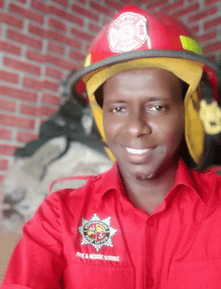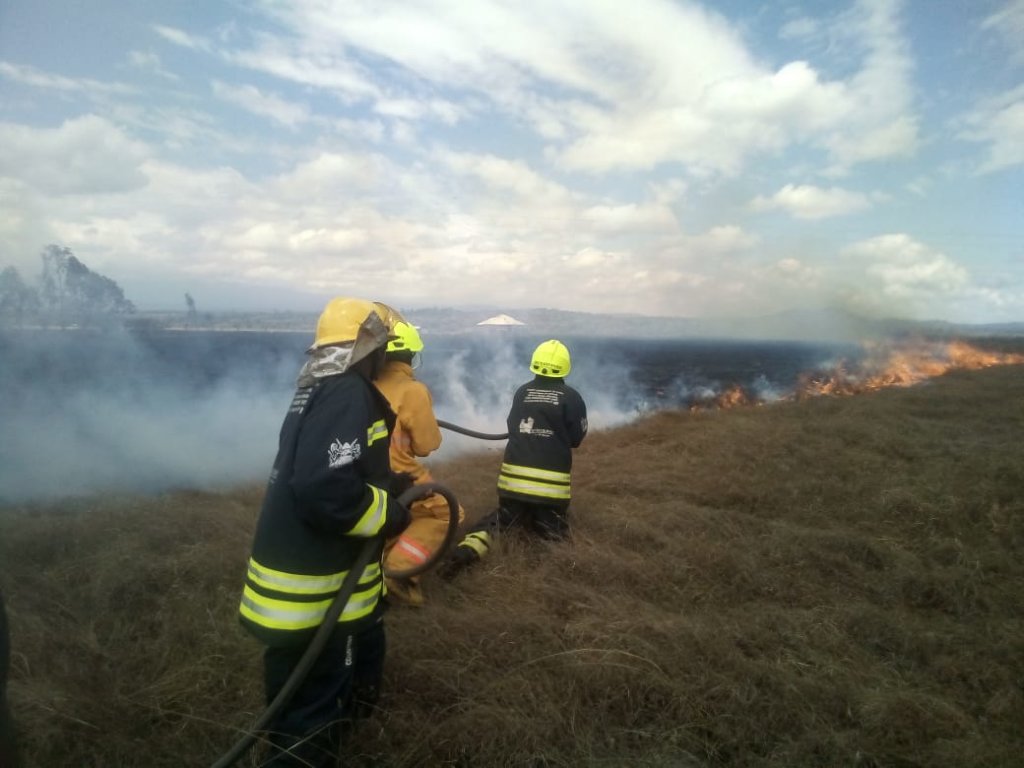Drought-Driven Wildfire in Kenya Strain Response System
BY JOSÉ NGUNJIRI AND WAKO ABGUDO
The COVID-19 pandemic has combined with vast wildfires in Kenya to place a great strain on an already overburdened wildland fire response system.
Kenya typically experiences long rains from March to May, and then short rains from October to December. June through August is mainly cool and dry over most parts of the country.
But since last January, Kenya has experienced an extreme “dry spell” in the Northern regions, which includes Garissa, Turkana and neighbouring counties, and in the central part of Kenya, which includes Meru, Nyeri and Kirinyaga counties. Wildfires have burned across these areas as well as around Mount Kenya, which lies just north of the Equator.
The Kenya Red Cross Society (KRCS), and government agencies involved in the wildfire response, including the Kenya Wild Life Service (KWS) and Mount Kenya Conservation, report that about 80,000 hectares have burned thus far in 2020. (Source: European Commission’s Directorate-General for European Civil Protection and Humanitarian aid Operations).
Staff of both the Kenya Forest Service and the KWS are trained to manage forest and grassland fires. But they lack the capacity to control these fast-moving fires. Personal Protective Equipment (PPE), mechanized equipment, tools and manpower are all limited. Kenya Defense Forces as well as NGOs such as the Sheldrick Wildlife Trust, have at times provided assistance.
When PPE is available, and this is not often, it is usually structural firefighter gear, which is generally cumbersome, heavy and not designed for wildland fire suppression activities. In addition to limited mobility and visibility, fire suppression staff wearing structural gear are burdened by extreme heat, even when pausing to rest.
Agencies and other entities involved in wildland fire management in Kenya are interested in partnering with people who can assist them in developing resources to protect the people who live in areas impacted by wildfires. The Africa Fire Mission (AFM) has been training, empowering, supporting and encouraging firefighters in Kenya since 2013. While the focus has been primarily on structural fire, there is a growing need to train and provide equipment and other resources for managing forest fires and bush fires. You can learn more about AFM and how you might get involved at: www.africafiremission.org
 José Njuki-Imwe Ngunjiri is a social change enthusiast, entrepreneur, mobilizer, and fire safety advocate with Africa Fire Mission. At 4 months old, José survived a fire that burnt 85% of his face. José went on with his life and trained as a firefighter later on graduating with a Firefighter 1 Certification. José is a self-motivated individual with an objective of saving lives and preventing property damage by working together with community dwellers and leaders to achieve the desired goals. He has regularly responded to a wide range of emergency situations and provided community outreach services to improve public knowledge of fire safety in vulnerable areas in Kenya. José volunteers with the Kiambu Fire Brigade Service in Kenya. He resides in Nairobi Kenya with his son.
José Njuki-Imwe Ngunjiri is a social change enthusiast, entrepreneur, mobilizer, and fire safety advocate with Africa Fire Mission. At 4 months old, José survived a fire that burnt 85% of his face. José went on with his life and trained as a firefighter later on graduating with a Firefighter 1 Certification. José is a self-motivated individual with an objective of saving lives and preventing property damage by working together with community dwellers and leaders to achieve the desired goals. He has regularly responded to a wide range of emergency situations and provided community outreach services to improve public knowledge of fire safety in vulnerable areas in Kenya. José volunteers with the Kiambu Fire Brigade Service in Kenya. He resides in Nairobi Kenya with his son.
 Wako Abgudo is Chief of Fire and Rescue Services for Isiolo County, Kenya. He earned his degree in mechanical engineering from Masinde Muliro University and has worked in that field, and also as a General Service Unit Police Officer. Chief Abgudo’s years of experience in environmental monitoring and occupational health and safety auditing showed him the paucity of fire safety protocols in many workplaces and inspired him to find a way to meet this need by pursuing and gaining his current job, where he has developed a diverse background in structural and wildland firefighting.
Wako Abgudo is Chief of Fire and Rescue Services for Isiolo County, Kenya. He earned his degree in mechanical engineering from Masinde Muliro University and has worked in that field, and also as a General Service Unit Police Officer. Chief Abgudo’s years of experience in environmental monitoring and occupational health and safety auditing showed him the paucity of fire safety protocols in many workplaces and inspired him to find a way to meet this need by pursuing and gaining his current job, where he has developed a diverse background in structural and wildland firefighting.

